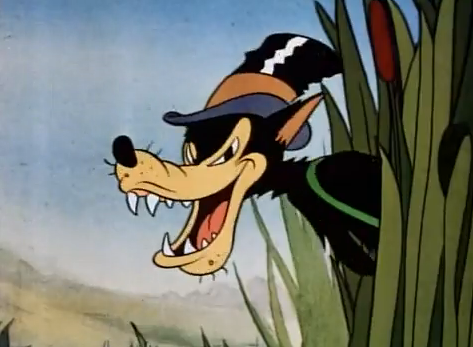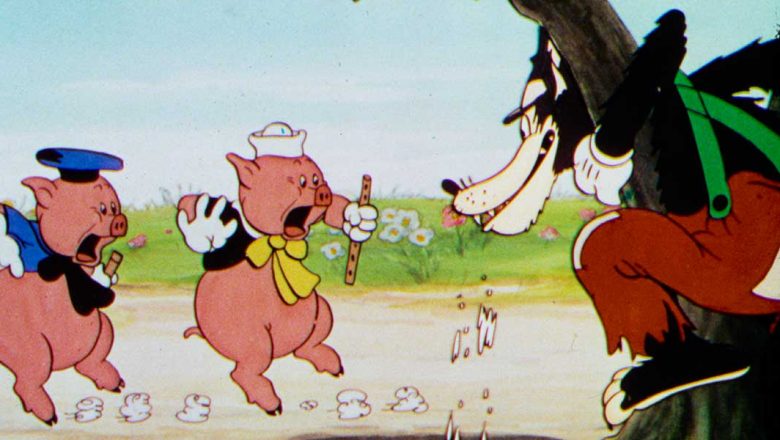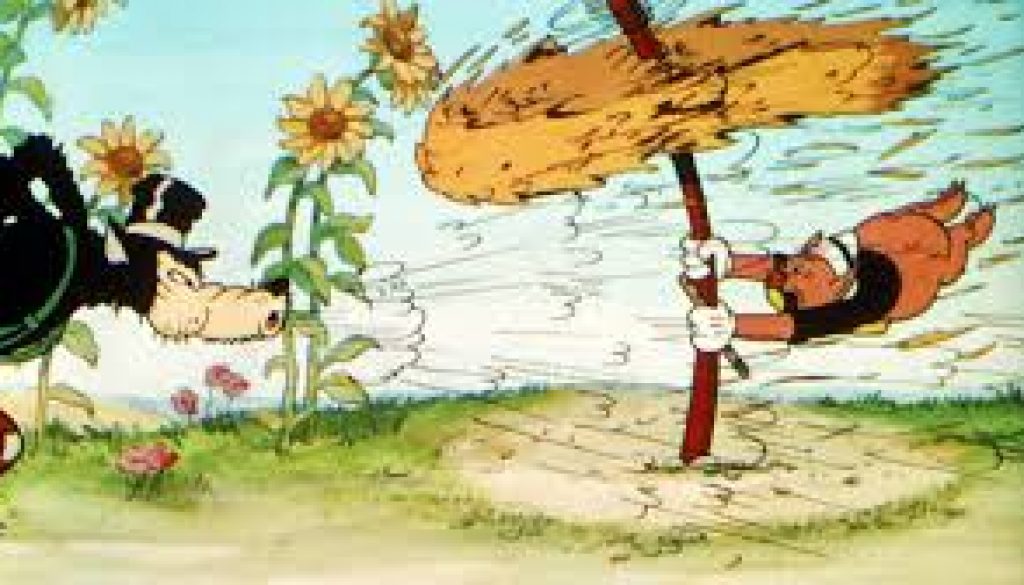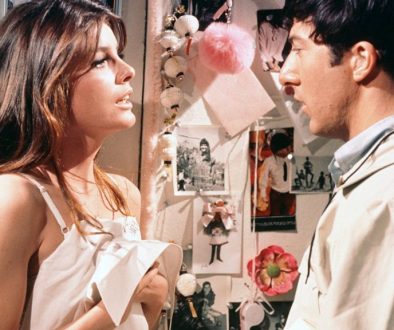Walt Disney and the 12 Principles of Animation

Arguably one of the twentieth century’s greatest storytellers, Walt Disney founded the “The Walt Disney Company in the early 1920s, and its dedicated animation studio, the “Walt Disney Animation Studio”. They paved the way for hand drawn cel-animation with critically and commercially successful animated shorts and features. Their breakthrough character Mickey Mouse, in his debut short Steamboat Willie (1928), originally broke Disney onto the animation scene, but they found their voice during the 1930s with the Silly Symphonies series, and their debut feature, Snow White and the Seven Dwarfs. Though it is arguably two of Walt Disney’s most-trusted animators, Frank Thomas and Ollie Johnston from his ‘Nine Old Men’ animator core group who have established this notion of success with the transformation of their animation from a ‘novelty, into a prestigious art form’ [Lasseter, 1987, p.35], with the use of the ’12 Principles of Animation,’ defined in their book, “The Illusion of Life” [Thomas and Johnston, 1981].
In examining these principles, I will be concentrating on “squash and stretch,” “follow through and overlapping action” and “exaggeration”, within two animation explored on this module; Disney’s Three Little Pigs (1933) and Snow White and the Seven Dwarfs (1937). Also, I will also be considering how Disney’s predominant style may have influenced how the animator could exploit these principles.
Following from the success of animated dance routines and comedy gags that were a dominated feature in early Micky Mouse (1928) shorts, the Walt Disney Studio began the production of the Silly Symphony series in the earlier 1930s. These short animations were an array of ‘original and progressive’ shorts which ‘caused a revolution in the animated cartoon industry’ [Merritt, 2005, p.4]. Based on nursery rhythms and fairytales, Walt Disney shuffled the Silly Symphony series into a new direction, concentrating on using it as a platform for experimenting with different colouring and animation techniques, characters and stories, and in doing so ‘laid the foundation for the narrative formulas’ that would make him the ‘country’s most influential fairytale entertainer’ [Merritt, 2005, p.4].
With each animation, audiences became excited by this new form, we were found wanting
more, as Lasseter states, ‘It was apparent to Disney that no one could successfully
animate a humid figure or life-like animal’ [Lasseter, 1987, p.35]; an improvement, and new
approach was needed. What came to fruition was the use of the three-strip Technicolour,
allowing Disney to use a full range of colours, rather than the red-green colouring
previously, and the multiplane camera, creating a three-dimensional effect. This allowed
the character actions to become more fluid and convincing, with each emerging
personalities becoming distinct. The use of humour also aided, this was exemplified in
their 1933 Silly Symphony, Three Little Pigs (1933).
Three Little Pigs, an animated adaptation of the classic children’s story had success for its ‘identifiable personalities that brought animation to new heights’ [Bryman,1995, p.8]. This was clearly defined through the differing personalities (of the pigs) through different coloured-clothing, instruments, and their voices. The contrasts of the pigs personality aided the audience in identifying who to cheer for, through Disney’s use of ‘folksy’ personalities. The singing, dancing and humour from ‘Fiddler Pig’ and ‘Fifer Pig’ emphasise this ‘folksy’ concept. With the identification of who is ‘good’/‘bad’ presented by the character of Big Bad Wolf and his actions of “blowing” down houses.
The personalities in the Three Little Pigs utilise the squash and stretch, exaggeration and follow through and overlapping action principles, aiding to the style of realism, as to Silly Symphonies ‘featured exaggerated […] physics and cartoonal metamorphosis’ [Pallant, 2010, p.345], which corresponded with the ‘design, context and action within live-action film’s representation of reality’ [Wells, 1998, p.25]. This is what Disney strived for, rather than the non-realistic animation Warner Bros used in their Looney Tunes (1930-1969) series, which emphasised on interaction with the audience, in order to ‘revitalise the traditional pleasure in the act of viewing’ [Lindvall & Melton, 1997, p.204], something Disney ignored, in-favour of realistic viewing.
An example of this realistic style within the Three Little Pigs is shown by the Big Bad Wolf’s character movement. During the wolf attempt trick the pigs, we see a shot of him utilising “running” movements; those of a wolf, with each of his limbs pushing off the ground and leaping up. In doing so, this movement demonstrates the follow through and overlapping action principle, as his body is following through naturally as anticipated, not immediately stopping, which would have deterred away from the realism element.
In discussing the Big Bad Wolf as a character, he displays each of my chosen principles. His mannerisms are exaggerated; often the enhancement of his movements is used by the animator as a device to show the audience what is happening. An example of this is the Big Bad Wolf attempting to blow down each of the pig’s poorly/well-constructed homes. The first two houses the Big Bad Wolf encounters made from straw and wood, the animator exaggerates the size of his chest, whilst the rest of his body stretches in a squash-and-stretch motion. Once he’s ‘blowing’, the follow through and overlapping action principle is illustrated by his body fluctuating up-and-down, and hat swaying as a result of this wind. This exaggeration of the size of chest and dramatic height change implies nothing could withstand this force, as each house is destroyed dramatically, further accentuating exaggeration. However in his encounter with the brick house, his attempts are futile and he is unable to “blow” it down, with each attempt becomes less powerful. This is represented with the size of his chest and lack of increased height with each passing attempt, the unbuttoning of his clothes further represent this. His facial colour alternates between purple-and-blue to display his lack of breath and the hanging of his tongue, gasping for air aid the exaggeration, whilst his body becoming skinnier and longer, exhibiting the squash and stretch. These actions of the Big Bad Wolf, instead of ‘rendering him more dangerous’ they ‘diminish him’ [Mitts, 2010, p.82].

In further discussing the squash and stretch principle, it is described as ‘the most important discovery’ [Thomas and Johnston, 1981, p.48]. This principle allows animators to express emotions of characters through a believable motion without disorientation, in a way the audience accepts whatever shape the character transforms into, allowing them a ‘sense of flexibility and life’ [Roy, 2013, p.4]. As shown by the Big Bad Wolf, this technique is predominately used in the Three Little Pigs to give the characters body movement. An example of this is shown by Fifer and Fiddler Pig when they running into Practical Pig’s home, subsequently jumping under his bed, scared. As they leap under his bed, their bodies stretch out with the arms, hands and hoofs widening as far as possible, in-keeping with the realism element. Not only does this exhibit their fear, demonstrated through the exaggeration principle of their relentless shaking and trembling, with their tails fluctuating between straight and curly, it shows realism in-regards to the accessory on Fiddler hat as it flutters through the leaping motion. The squash and stretch principle is also shown through Practical Pig’s piano playing. Whenever he begins playing, the piano oscillates up-and- down in time with the sound, bending down on each note he plays and returning to its normal realistic shape when he stops playing, and occasionally bounces after he plays a variety of notes. Reinforcing the cartoonal metamorphosis Pallant discusses in Disney’s Silly Symphonies.
This pioneering technique is also shown by dwarfs in Snow White and the Seven Dwarfs, this principle aided in the popularity of the feature giving ‘them personality’ [Webster, 2005 p.24], in-doing so helps identify each different dwarf. An example of this principle in use is with the character ‘Sneezy’, and his attempt to withhold his eventual sneeze. Whilst he is comically stumbling away from the flowers shoved into his nose by Bashful, Sneezy’s nose and face/head expand and return to normal multiple times before he eventually leaps up in the air squashing and stretching. Though once he does eventually sneeze, the exaggeration principle is shown from the power of his sneeze, forces any furniture and dwarfs in the direction of his sneeze to be blown into the edge of the house and how the rest of the dwarfs attempt to stop it.
The squash and stretch technique is also displayed while the dwarfs are walking/singing towards the mine. The movements as they rise and fall are emphasised, and keep them in rhythm with the “Heigh-Ho” song, this action gives the illusion of volume and weight to the dwarfs as they walk. In the mine, ‘Doc’ hammers on the diamonds to see if they are real and proceeds to wince when it is not, his face squashing down unrealistically displaying his dismay at the sound, with his cheeks widening and beard scrunching toward his body, his face returns back to normal as he tosses it away. Additionally, Grumpy’s miserable expression with his ‘bulbous nose’ and Dopey’s big ears are aided by squash and stretch principle as it ‘give them the illusion of life’ [Prince, 2012, p.117], playing into Disney style of hyperrealism, as this method aids Disney into making their cartoons more believable.
The use of follow through and overlapping action is exhibited in Snow White during the musical number, “Whistle While You Work,” where Snow White and her animal companions are in the dwarfs home cleaning it. This principle generally is most notable during Disney’s signing/dancing sequences. In this one, we see Snow White start to dance with her dress swaying in the process; though the principle does not immediately begin as she moves, it waits for a few moments until it begins to catch up with her swaying movements, illustrating realism. The same motion can be said about the tails on the animals and Snow White’s hair as they are cleaning the house, they rotate and sway as the character moves. These actions terminate when the characters stop moving, once again contributing to the realism style.
During the dancing sequences Snow White has with the dwarfs in the house, a few of the dwarfs are realistically dancing with Snow White whilst the others are playing various instruments, alongside ‘Dopey’ playing the drums. When ‘Happy’ is dancing, his body sways and his feet move quickly as he alters between different styles of dancing, whilst Snow White claps several times. When she begins to dance, her clothing sways with the movements she creates, enhancing the realism device used by Disney.
The other dwarfs move their hands accordingly to play their instruments, we notice the strings vibrate as their hands move when his strum and the symbols vibrant when Dopey hits them, again illustrating realism. However in this sequence we also observe the exaggeration and squash and stretch principles being used by Dopey when a fly interrupts his playing. This causes Dopey’s exaggerated pupils to stop wondering in a speedy circular motion, and as he violently starts drumming, attempting to kill the fly, his body/neck bobble up-and-down due to his tiredness in a squash-and-stench motion. This is also shown with Sneezy’s cheeks expanding as his plays, then smashing a drumming symbol on his face in order to kill the fly, in doing-so causes his face to vibrate as-if it were a drumming symbol in an exaggerated manner. This reiterates the characters cartoonal figures, rather than showing a realistic outcome.
The follow through and overlapping action is also shown with ‘Fiddler Pig’ and ‘Fifer Pig’ in the Three Little Pigs, when they start singing and dancing after finishing building their houses. As they sing “Who’s afraid of the Big Bad Wolf?”, their hoofs fluctuate up-and- down as they dance, with their pig tails curling in-and-out, and heads bobbling as well, whilst their bodies swing back and forth in time with the music. Their hands move accordingly as they play their instruments, we notice the fiddle and flute move with their hands, keeping in-time with the music, thus illustrating this principle and the animator exploitation of realism.
A similar use of this principle is during the pigs building their individual houses. ‘Fifer Pig,’ the flute-playing pig who builds his house out of straw, throws the straw onto the roof of his house with each bit landed breaking out gradually awaiting the next. Whilst Fifer is skipping and throwing extra bits on top, it demonstrate the use of this principle as we see his arm movement move up-and-down as he throws each piece. The same can be said about ‘Fidder Pig,’ the fiddler-playing pig who builds his house out of wood. We see his hand movements gradually fluctuate back-and-forth as he hammers on a piece of infrastructure, whilst using ladder he is standing on as support, it squashes-and-stretches with his exaggerated squatting movement. Lastly, ‘Practical Pig,’ the piano-playing pig whose house is built from brick, slaps concrete on each brick, again in a back-and-forth motion, with each potion of concrete he throws onto the brick takes a moment to land on it, with some of the wet-concrete dripping off the brick, restating the realism stylistic device used by the animator.
Though this notion of realism, or ‘hyperrealism’ is most significant within Disney’s first animated feature, Snow White and the Seven Dwarfs. As Pallant stipulates, this mode of style has come to ‘define a mode of animation’ [Pallant, 2010, p.346], as this mode of animation defined Disney as a studio and in doing so set a benchmark of quality within the animation industry. This mode is evident in the character of Snow White, the size of her eyes and mouth are small in comparison to the other characters, and drawn in that way to emphasis her cuteness, which is exploited by the animator throughout. Though were it not for the principles, the ‘completely realistic human figure could not be depicted using traditional 2-D hand animation’ [Pallant, 2010, p.346], as the use of these principles further emphasised Disney’s style of realism. Snow White made significant strides in attaining realism, with the additional use of naturalistic drawing and cinematic framing, which aided in future use of verisimilitude in later features.
Yet, the most ‘significant element of Disney’s hyperrealism’ [Pallant, 2010, p.346] was the fluid lifelike movement and expressions Snow White and the animals create. Her movements and expression are based from an actual actress, as were the woodland animals, based off live action, in-keeping with the realism style Disney accentuate throughout. As Wells states, ‘the construction, movement and behavioural tendencies of ‘the body’ in the hyper-realist animated film will correspond to the orthodox physical aspects of human beings and creatures in the ‘real’ world’ [Wells, 1998, p.25]. However the Fleischer studio, known for their Betty Boop (1932–39) series, felt Disney’s use of ‘rotoscoped animation had a tendency to lose the illusion of life’ in the character of Snow White [Thomas and Johnston, 1981, p.323]. Though unlike Three Little Pigs, the use of ‘cartoonal metamorphosis’ [Wells, 1998, p69] is mostly unused White, with the omission of the Queen’s transformation into a witch.
The primary focus of these 12 principles was to depict realism into animation, through the use of using basic laws of physics, sequentially giving the character(s) a personality through squash and stretch to catch the attention of the audience. It also served as a guide for productive and creative. However, Thomas and Johnston definition of these principles came through the desire of Walt Disney in adding realism into animation, as discussion, for the foundations of cel-animation within the Walt Disney Studios’ work. As Wells states ’the characters, objects and environment within a hyperrealist animated film are subject to the conventional physical laws of the real world’, (Wells, 1998:25). Disney wanted to add this into his characters and their personalities to an engaging audience. The stylistic device of this is clearly exhibited throughout the Three Little Pigs and Snow White and the Seven Dwarfs through these principles, which set a benchmark in the animation industry, combining realism in animation to create the Disney empire we see today.
Bibliography
- Chris Pallant, ‘Disney-Formalism: Rethinking ‘Classic Disney’, (Sage Publications: London, 2010), pp. 341-352. Print.
- Russell Merritt, ‘Lost on Pleasure Islands: Storytelling in Disney’s Silly Symphonies’, Film Quarterly, Vol. 59, (Berkeley, 2005), p. 4. Print.
- Frank Thomas, and Ollie Johnston. ‘The Illusion of Life: Disney Animation’, (New York: Hyperion, 1981), pp. 48-70. Print.
- Paul Wells, ‘Understanding Animation’, (London: Routledge, 1998), pp. 25-69. Print.
- Alan Bryman, ‘Disney and his Worlds’, (London: Routledge, 1995), p. 8. Print.
- John Lasseter, ‘Principles of Traditional Animation Applied to 3D Computer Animation’, (New York: 1987), pp. 35-44. Print.
- Debra Mitts-Smith, ’Picturing the Wolf in Children’s Literature’ (London: Routledge, 2010), p. 82. Print.
- Terrance R. Lindvall and J. Matthew Melton, ‘Towards a Post-Modern Animated Discourse: Bakhtin, Intertextuality and the Cartoon Carnival,’ in A Reader in Animation Studies, ed. Jayne Pilling (London: John Libbey, 1997), p. 204. Print.
- Chris Webster, ‘Animation: The Mechanics of Motion’, (Oxford: 2005), p. 24. Print.
- Roy, Kenny, ‘How to Cheat in Maya 2014: Tools and Techniques for Character Animation’, (Abingdon, Oxon: 2013), p. 4. Print.
-
Stephen Prince, ‘Digital Visual Effects in Cinema: The Seduction of Reality’. New
Brunswick, NJ: Rutgers UP, 2012. Print.
References
• Disney, Walt and Iwerks, Ub. Steamboat Willie, 1928. Walt Disney Productions. Film.
• Gillett, Burt. Three Little Pigs, 1933. Walt Disney Productions. Film.
• Hand, David. Snow White and the Seven Dwarfs, 1937. Walt Disney Productions. Film.


